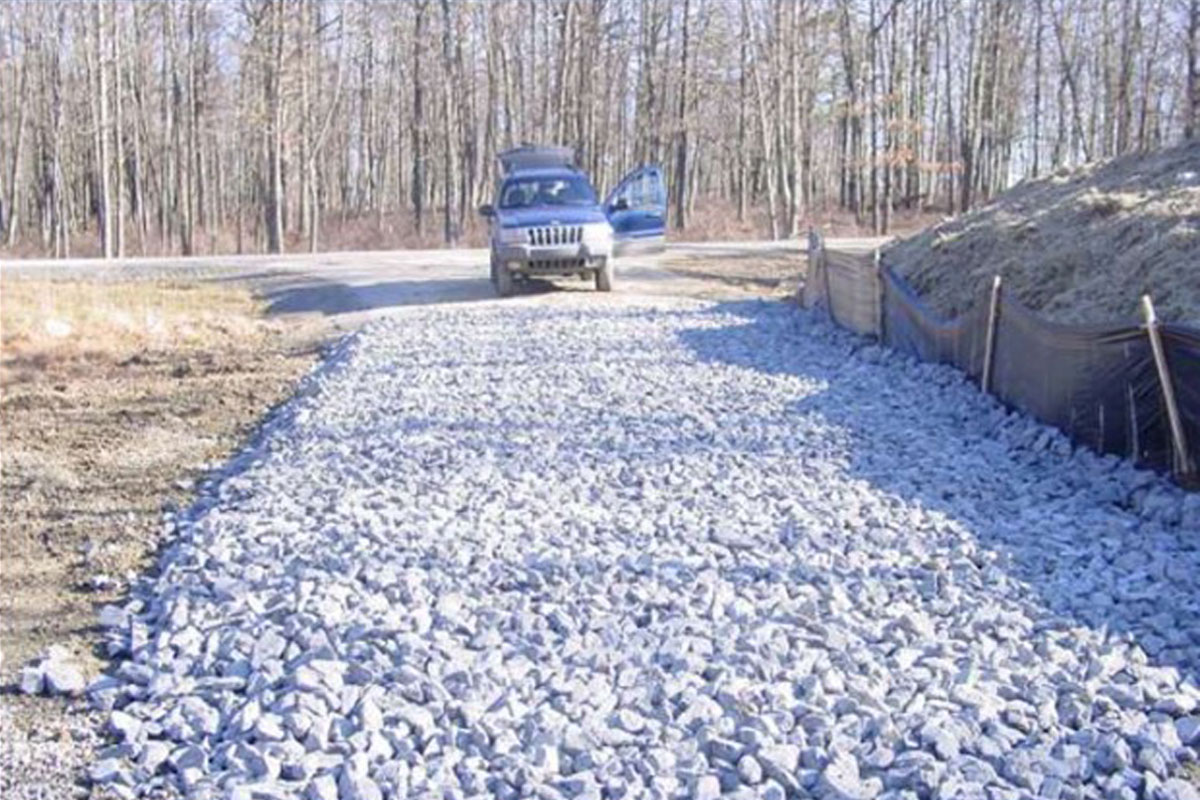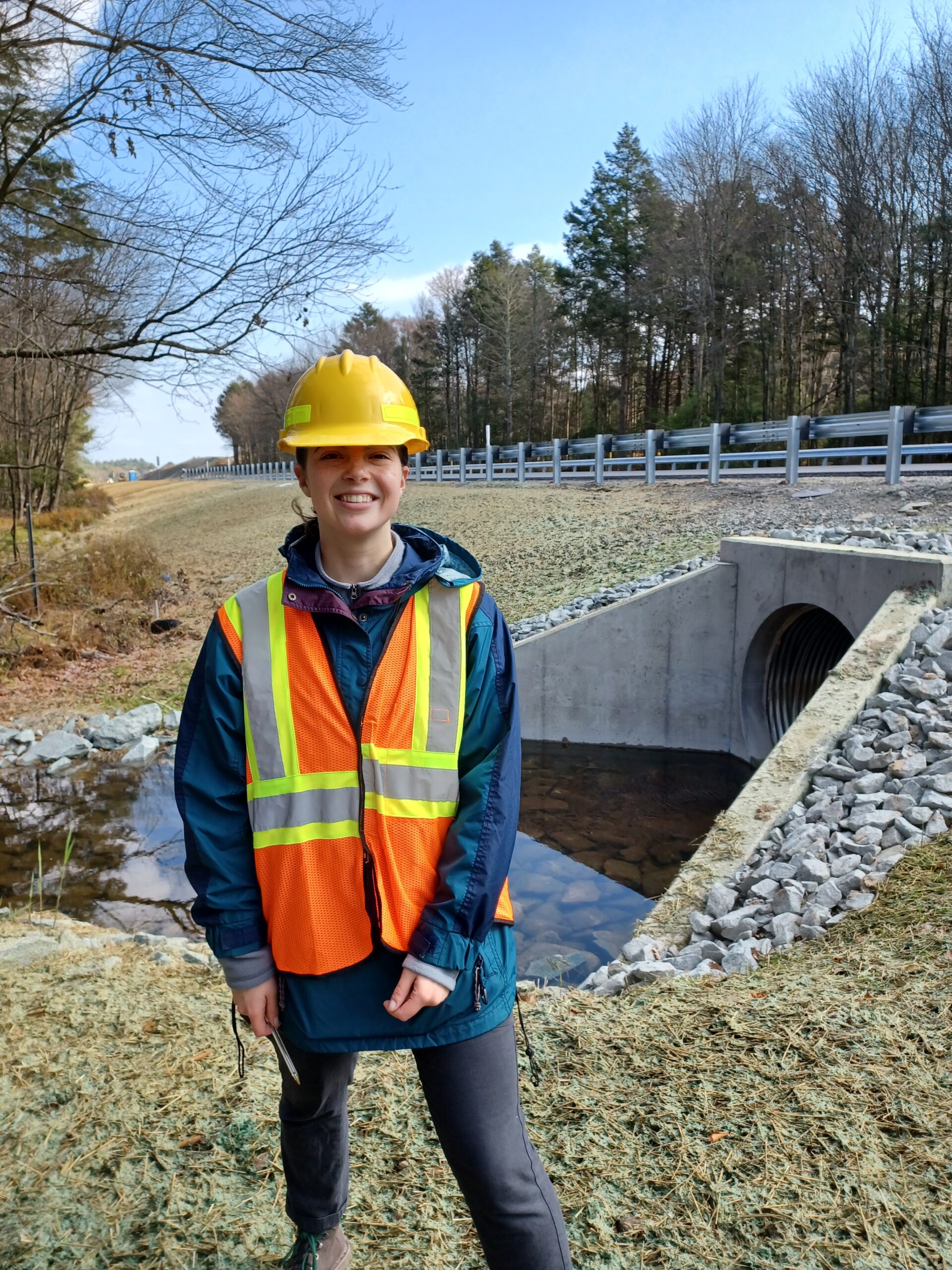News

Controlling Erosion and Sediment with Rock Construction Entrances

By Ally McGee, PCCD Resource Conservationist
An active construction site can seem like quite a bit of activity from afar. A good construction project though is carefully designed and executed, which includes minimizing environmental impact. We will see how important it is for construction projects to manage soil when performing earthmoving operations like excavating trenches and placing fill. These activities should state how the site will control for the possibility of erosion (the process by which land is worn away by water, wind, or chemical action) and sediment (soils or other products of erosion transported by stormwater), per Title 25, Chapter 102 of Pennsylvania Code. The Pennsylvania Code includes all rules, regulations, and other administrative documents from the Government of Pennsylvania.
Stormwater transporting sediment to a waterway such as a river, stream, wetland, or lake, threatens water quality for people, wildlife, and land. Sediment can create a toxic environment for aquatic life. It can contaminate water by carrying toxic chemicals, alter habitats or stream flow when built up, prevent animals from seeing food, or clog fish gills. Almost all the streams in Pike County exhibit a “High-Quality” or “Exceptional Value” water quality standard per Title 25, Chapter 93 of Pennsylvania Code. Avoiding sediment pollution is vital to conserving Pike County’s particularly high stream health. In short, it’s important for construction operations to keep dirt on their site! The Pennsylvania Department of Environmental Protection (DEP) and Conservation Districts do this by regulating erosion and sediment control measures on earth-disturbing projects.
In Pennsylvania, all earth disturbance activities are regulated by Title 25, Chapter 102 of the Pennsylvania Code. Chapter 102 addresses Erosion and Sediment Control and requires the proper implementation of best management practices, an official set of structures and activities that, when used properly, prevent erosion and therefore keep soil out of the water. (Conservation professionals call best management practices BMPs!) The Erosion and Sediment Pollution Control manual contains a lot of BMPs , but to even begin construction, a project must have plans for site access. This is why we are starting at the first BMP you might encounter on a site: Rock Construction Entrances.
There are Chapter 102 requirements for what constitutes a rock construction entrance. A filter cloth, or geotextile underlayment, must be placed beneath the rock construction entrance to separate the soil it accumulates from clean soil below. The entrance also must be at least fifty feet long and twenty feet wide, unless site conditions warrant larger dimensions. To maintain the effectiveness of a rock construction entrance, an operator must periodically remove accumulated soil and add rock to retain the required dimensions. The effectiveness of these specifications for rock construction entrances, along with those of other BMPs in the DEP Erosion and Sediment Pollution Control Manual, has been proved through extensive testing.
A rock construction entrance exhibits an average effectiveness compared to all the other BMPs. In certain special protection watersheds, rock construction entrances are required to include a wash rack or a wheel wash to clean tires with pressurized water prior to site exit. These measures improve the rock construction entrance’s effectiveness, ensuring that high quality waterways remain as such.
Keeping soil in its place and out of the water is critical to the health of Pike County’s notably healthy waterways. Luckily, there are regulations and BMPs like rock construction entrances to keep sediment pollution at bay.
References:
Erosion and Sediment Pollution Control Program Manual
E&S Construction Site Access – York County Conservation District (yorkccd.org)
SOIL EROSION AND SEDIMENT REQUIREMENTS FOR (montgomeryconservation.org)
